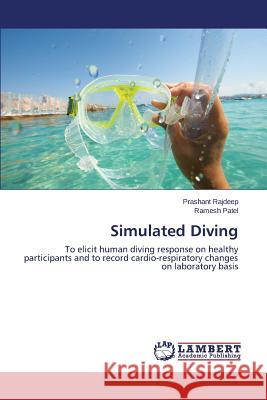Simulated Diving » książka
Simulated Diving
ISBN-13: 9783659669200 / Angielski / Miękka / 2015 / 80 str.
Due to large number of water bodies, occupation related to water fronts, natural calamities and risk of young ones to water, the number of deaths due to drowning in India are on the rise. In order to reduce or prevent drowning in most of the probable cases, it is necessary to initiate studies which should be clubbed to peripheral lab studies; which help to expand knowledge about Physiology 'Behind the Dive'; which also prevents its conceptual stasis. This book deals with eliciting the human diving response by stimulating it in the lab and measuring the cardiopulmonary adjustments for the same. This provides information for students and researchers interested in "Diving Physiology." The results of different sets of experiment for checking the components of a dive like apnea, immersion, temperature, wetness and location of skin sensor, help shed some light on these new and exciting parameters. Honing this response on regular bases in the form of cold showers can help get an adaptive response to diving. In the present content, it is possible to make use of these findings to design a device to increase the patient efforts in performing PFT, thereby adding wings to respiratory medicine.
Due to large number of water bodies, occupation related to water fronts, natural calamities and risk of young ones to water, the number of deaths due to drowning in India are on the rise. In order to reduce or prevent drowning in most of the probable cases, it is necessary to initiate studies which should be clubbed to peripheral lab studies; which help to expand knowledge about Physiology Behind the Dive; which also prevents its conceptual stasis. This book deals with eliciting the human diving response by stimulating it in the lab and measuring the cardiopulmonary adjustments for the same. This provides information for students and researchers interested in "Diving Physiology". The results of different sets of experiment for checking the components of a dive like apnea, immersion, temperature, wetness and location of skin sensor, help shed some light on these new and exciting parameters. Honing this response on regular bases in the form of cold showers can help get an adaptive response to diving. In the present content, it is possible to make use of these findings to design a device to increase the patient efforts in performing PFT, thereby adding wings to respiratory medicine.











